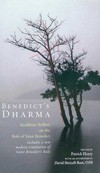Buddha's corporeal relics are an object of great adoration and worship for Buddhists all around the world. According to Mahaparinibbanasutta Buddha directed his chief disciple Ananda to construct stupa, over his relics after cremation, at the crossing of four highways in the same fashion as the stupa of a universal king. Of the eight places where a stupa was erected over his corporeal relics soon after the Mahaparinirvana of the Lord, one was at Kapilavastu where Gautama had spent the first twenty-nine years of his life before renouncing the world for the emancipation of humanity at large. Sakyas, the community to which he belonged had the privilege of enshrining one-eighth share of the relics in this stupa after holding a befitting ceremony. Like many Buddhist sites the whereabouts of Kapilavastu were also lost to posterity after the extinction of the religion from the country of its birth over eight hundred years ago.
The book contains an interesting account of the work which led to the discovery of the relics in the stupa at Piprahwa in Basti district of Utter Pradesh. Sealings with the legend Kapilavastu, found in excavations at the site, clinched the issue of identification as well, besides establishing that the stupa which yielded the relics was, in the first instance, constructed by the Sakyas over their one-eighth share.
Corporeal relics were carried to Sri Lanka for exposition and worship under a cultural pact with the Government of India. An account of the journey to Sri Lanka, the divinely honour received by the relics and the depth of faith and ovation reflected in the mile-long queue of the people waiting patiently in the scorching sun for their own turn is an additional attraction of the book.
Buddha's Relics from Kapilavastu, K. M. Srivastava, Agam Kala Prakashan, Hardcover, 190 pages, $39.00
Born on twenty first September 1927 at Allahabad, Shri K.M. Sristava hails from Basti district of Utter Pradesh. He obtained the degree of Master of Arts in History from Allahabad University in 1949 and was appointed in the Archaeological Survey of India in 1952 after undergoing training. Shri Srivastava has conducted excavations at many important sites like Iothal and Rangpur (both in Gujarat), Kalibangan (Rajasthan), Burzahom (Kashmir), etc. He visited United Arab Republic in the 1962 as one of the members of a team to salvage the antiquities of Nubia from the area to be submerged on account of the construction of the Aswan Dam.
The identification of the lost site of Kapilavastu is the greatest achievement of Shri Srivastava's life. Standing as a landmark in history it has received world-wide acclaim. As director (Expedition Abroad) he was deputed by the Government of India to Kampuchea as the leader of a nine member team in 1982 to prepare a comprehensive project report on the preservation of the temple at Angkor Wat. The work has been considered to be of outstanding merit. Again Shri Srivastava visited Bahrain in 1984 as the leader of a thirteen member team to undertake excavations. He has published several books like Kapilavastu, Community Movement in Proto-historic India and New Era of Indian Archaeology, besides contributing a large number of articles in research journals.
|
CONTENTS: Buddha's Relics from Kapilavastu
|
|
|
Preface
|
|
|
|
| I. |
Reminiscenes and Initiation |
1
|
| II. |
Analysis and Calculation |
8
|
| III. |
Striking the Spade |
24 |
| IV. |
Ringing the Bells |
32 |
| V. |
Publicity |
40 |
| VI. |
The Stupa |
45 |
| VII. |
Interlude |
56 |
| VIII. |
The Town of Kapilavastu |
62 |
| IX. |
The Turning Point |
75 |
| X. |
Relics for Sri Lanka |
85 |
| XI. |
Journey to Sri Lanka |
101 |
| XII. |
Relics in Sri Lanka |
111 |
| XIII. |
Visit to Monuments |
124 |
| XIV. |
Epilogue |
139 |
|




